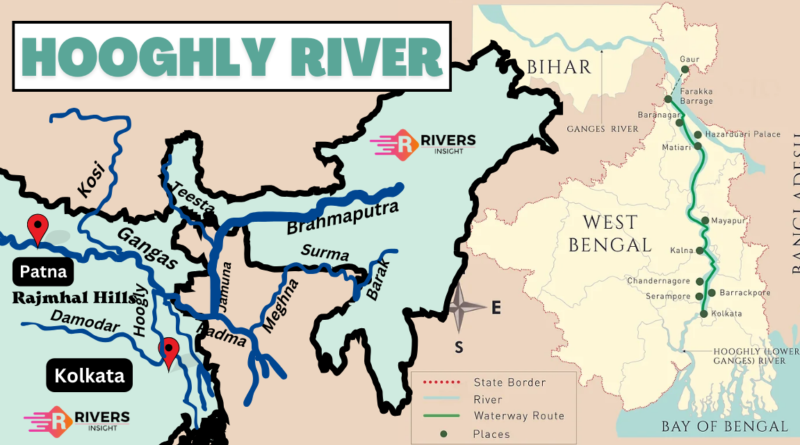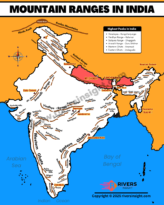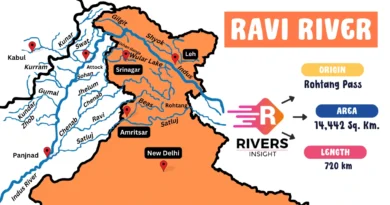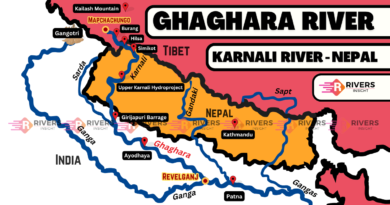Hooghly River: Map & Tributaries | Kolkata
The Hooghly River is also known as Bhagirathi-Hooghly and Kati-Ganga. It is a 260 km long distributary of the Ganga River, flowing through the state of West Bengal in eastern India. It originates from the Ganges River at Murshidabad and flows southwards to empty into the Bay of Bengal. Along its course, it passes through several important towns and cities, most notably, Kolkata is located on the Hooghly River.
| Other Names | Bhagirathi-Hooghly, Kati-Ganga |
| Length | 260 km |
| Origin | Murshidabad, West Bengal |
| State | West Bengal, India |
| Mouth | Bay of Bengal |
| Notable Fact | Kolkata is located on the Hooghly River |
| Tributaries | Bhagirathi, Damodar, Rupnarayan, Haldi |
Table of Contents
Formation and Course of the Hooghly River
The Hooghly River is a significant distributary of the Ganga River, originating from where the Ganges River bifurcates at the Murshidabad district of West Bengal, India. This bifurcation occurs at a place called Jangipur, where the Ganges River divides into two branches:
- Bhagirathi-Hooghly River (also known as the Hooghly River): flows southwards through the fertile plains of West Bengal
- Padma River: flows eastwards into Bangladesh
During its course, it passes through several districts of West Bengal, including:
- Murshidabad
- Nadia
- Hooghly
- North 24 Parganas
Map of the Hooghly River in India
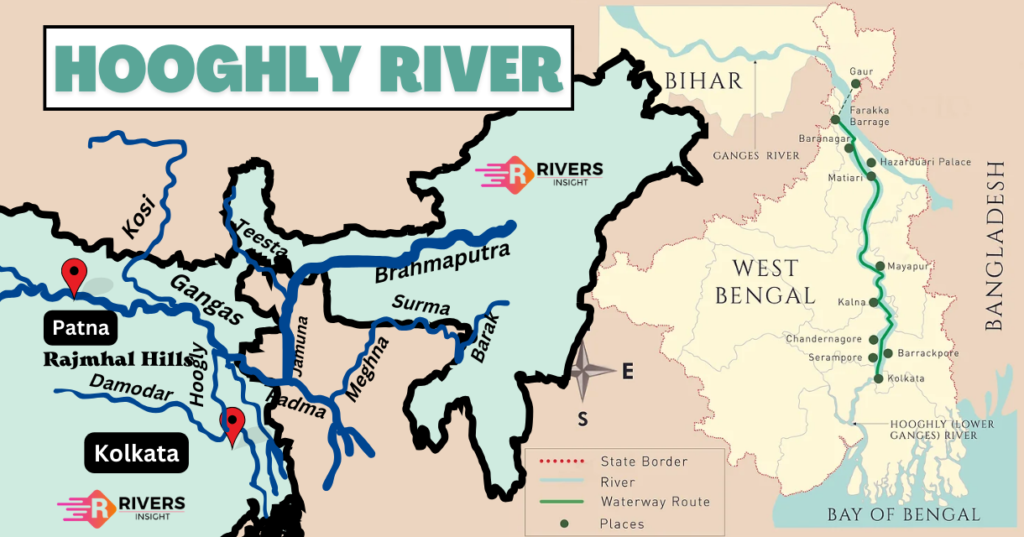
Man-made Bifurcation
In addition to the natural bifurcation at Jangipur, a man-made diversion system is located at Farakka. The Farakka Barrage is a man-made system that helps control the Hooghly River’s water flow. It diverts some water from the Ganges River into the Farakka Feeder Canal.
The Farakka Feeder Canal is a 42-kilometer-long canal that connects the Ganges River to the Hooghly River. It supplies the Hooghly with a significant amount of water, especially during the dry season (December to May), when the river’s natural flow is low. This ensures a consistent flow of water throughout the year, supporting the river’s various uses, including irrigation, drinking water, and industrial activities.
Towns and Cities
The river flows through several towns and cities, including:
- Katwa
- Nabadwip
- Jiaganj
- Azimganj
- Baharampur
- Kolkata (the capital city of West Bengal)
Tributaries of the Hooghly River
The Hooghly River has the following tributaries:
- Bhagirathi
- Jhalangi
- Damodar
- Haldi
- Rupnarayan
- Dwarakeswar
Historical Background
Here’s a brief overview of the historical background of the Hooghly River:
- Ancient Era (300 BCE – 500 CE): The Hooghly River was an important trade route, known as the “Ganga” or “Bhagirathi”. It was considered sacred by Hindus and was home to ancient cities like Tamralipta and Saptagram.
- Medieval Era (500 – 1500 CE): The river continued to support trade and commerce, and was an important route for Buddhist and Hindu pilgrims.
- European Era (1500 – 1757 CE): The Portuguese established a trading post at Hooghly, and the river played a crucial role in the European colonization of India.
- British Era (1757 – 1947 CE): The British East India Company established its first foothold in India at Hooghly, and the river supported the company’s expansion in India.
- Post-Independence Era (1947 CE – present): It continues to support industries like jute, textiles, and engineering, and is an important source of freshwater.
National Waterway-1 (NW-1)
The Hooghly River forms a part of National Waterway-1 (NW-1), which stretches from Haldia to Allahabad, covering a distance of 1,620 kilometers. The Hooghly River section of NW-1 spans approximately 560 kilometers from Haldia to Kolkata.
As part of NW-1, it is an important transportation artery, supporting cargo and passenger traffic. The waterway is navigable for vessels with a draft of up to 3 meters.
Moreover, a section of NW-1 is maintained by the Inland Waterways Authority of India (IWAI), which ensures the river’s navigability and provides the necessary infrastructure.
Frequently Asked Questions (FAQs)
Q: Kolkata is located on which river?
A: Kolkata is located on the Hooghly River, a major distributary of the Ganges in West Bengal.
Q: Where is the Hooghly River located?
A: The Hooghly River is located in the eastern Indian state of West Bengal.
Q: Hugli River is in which state?
A: The Hugli (or Hooghly) River flows through the state of West Bengal, India.

